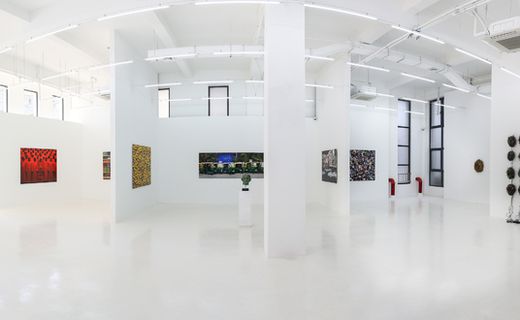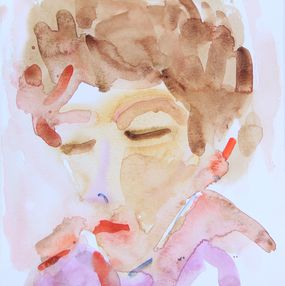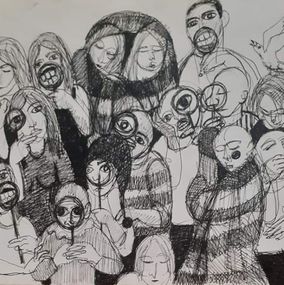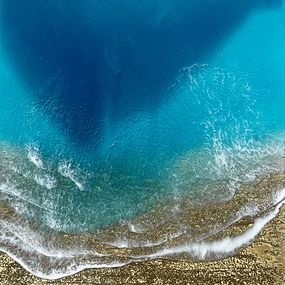
SWAB Barcelona
Spotlight on Art on 56th
Discover artworks our collectors love
-
澳洲幸运十开奖官网开奖历史记录查询 开奖结果查询记录 澳洲幸运十历史开奖记录查询 Featured Galleries
Discover our selection of galleries

Tobian Art Gallery
Florence, Italy
Located in a UNESCO World Heritage site in the heart of Oltrarno in Florence, the Tobian Art Gallery is a space dedicated to Visual Arts. The idea comes from the founder Giacomo Pirozzi, a passionate art lover. Thanks to all his connections with artists and galleries worldwide, he has created an innovative and creative space where cultures meet and people can learn through the international language of arts. Although Contemporary Art and Photography are the main focus, the gallery plans a good selection of publications dedicated to Visual Arts. The driving idea is to promote and support young and emerging international artists.
Read more

Crush of the Month: Our Team's Favorites in August
Cubism
Artsper, a world leader in online contemporary art sales


Selection
Our experts select the best contemporary art galleries.
Negotiated lower prices
Artsper develops long-term, trustworthy relationships with its 1800+ partner galleries.
Secure payments
You can order safely by credit card, Paypal or bank transfer.
-
Current collection
Bronze Sculpture
The technique used in the creation of bronze sculptures has changed very little since Antiquity. The sculptor begins by fashioning the subject in wax, then covers it with clay, pours on the bronze, an alloy of copper and tin, then breaks open the terracotta, leaving only the bronze object behind. Highly valued by sculptors, bronze is a robust and resistant material that fairs well outside. Using wax to create the initial mould allows for a high level of detail on the final sculpture, unlike steel sculpture. Certain nuances in color can be produced through the use of patinas. These qualities explain why bronze is one of the oldest materials to be used by humans. Indeed, bronze tools were used in Mesopotamia, Egypt and China around 2800 BC. In Mesopotamia, near to present-day Iran, bronze was used to depict animals in sacred art. In Egypt, it was was used to personify the gods, and also to create small sculpture statues placed in the tombs of the deceased. However, it was Ancient Greece, where craftsmen began to sculpt human figures and deities with remarkable realism, that gave bronze its prominent place in the history of art. Many pieces of work were imported to Rome, where the production of bronze sculptures developed. Bronze sculptures soon began to decorate the theatres and the homes of the rich. Admiring the skills of the Greeks, the Romans began ordering sculptures from merchants and craftsmen, who made copies of the moulds of the statues. With the birth of Christianity, evangelisation and the building of churches became the priorities, and bronze creations were replaced by stone sculptures for decorating churches. It was only in the 14th century that masterpieces were rediscovered during excavations of Italian archaeological sites. A century later, Brunelleschi and Ghiberti set the Renaissance in motion by decorating the doors of the Florence Baptistery in bronze. Donatello, inspired by ancient Roman sculpture, was the first to excel in the art of expressing emotions through bronze sculptures, followed by Verrocchio, his pupil (and master of Leonardo da Vinci). Although the practice spread throughout Europe, it was mainly focused in Italy, where sculptors competed to obtain the most convincing results. During the 16th century, the Flemish Jean de Bologne established himself as the undisputed master of bronze. He was the most copied artist in the 17th century, and it is partly due to him that the bronze sculpture spread across Europe. In Italy, production of bronze sculpture was fairly constant, irrespective of the period. In France, on the other hand, this technique depended on the political regime. When Louis XIV invited sculptors to his court (essentially to decorate Versailles) demand for bronze reappeared as a form of courtly art. Bronze sculpture underwent a resurgence during the 19th century, with Rodin and Camille Claudel, and then with Cubism and the Art Deco movement. Bronze is an expensive, heavy material and costly for collectors to buy and its use has become less prevalent in the 20th and 21st centuries, but some artists use it nonetheless: Giuseppe Penone, Alberto Giacometti with his strange silhouettes, the compressions of César Baldaccini, Philippe Pasqua's butterflies and still life sculpture can all be seen on Artsper!














































